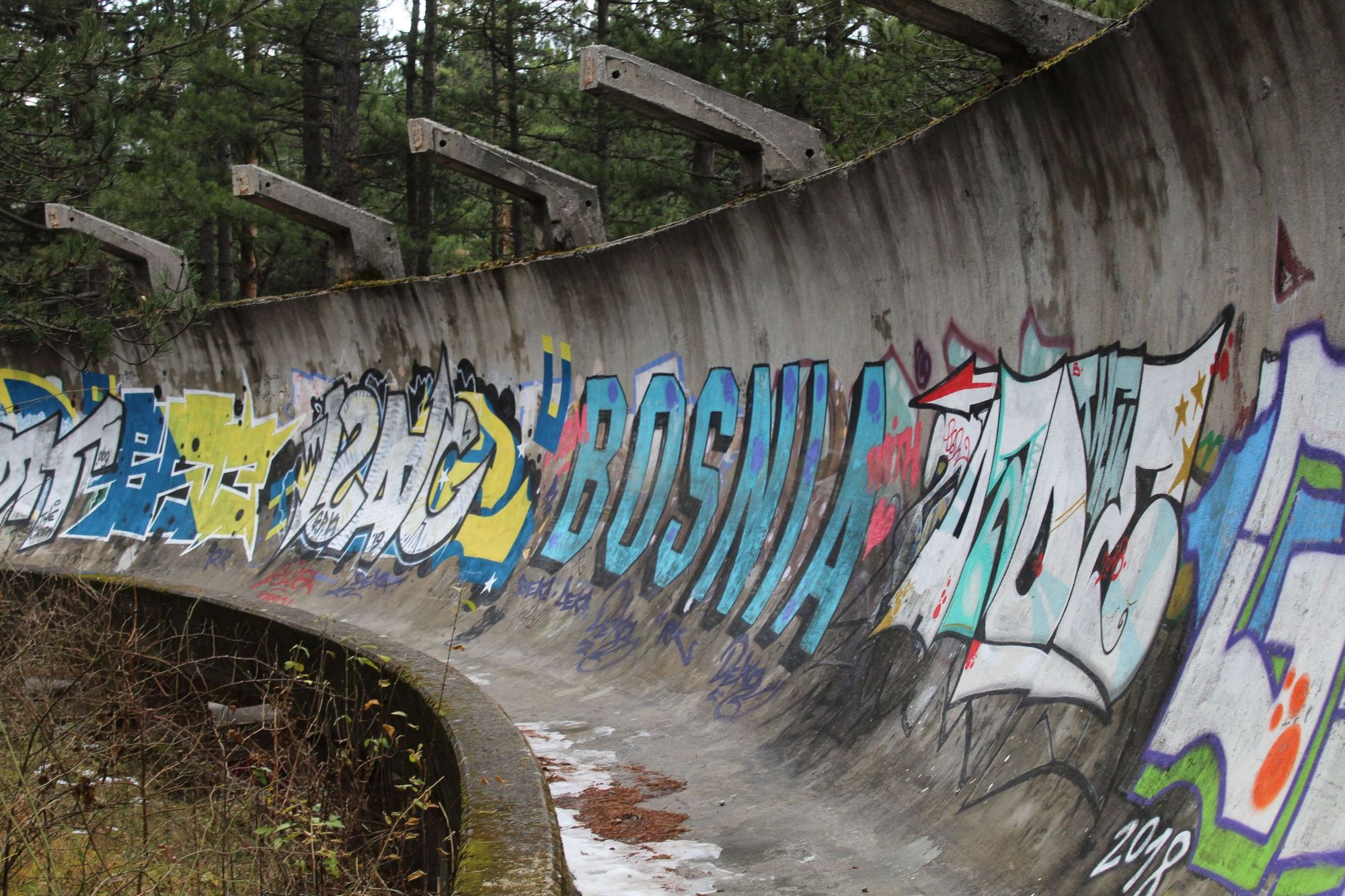The smell of the pine trees punctuates the cold mountain air on Mount Trebević. Under foot is a mixture of concrete, ice and piles of wilting leaves. Less than two metres in width, the concrete track I'm following weaves through the forest, down the 1,627m mountain and back to the historic city of Sarajevo, the capital of Bosnia and Herzegovina. I'm walking down what was once the bobsleigh and luge track for the 1984 Winter Olympics. Now covered in bright, bubbling graffiti from local artists, the site has developed into one of the most unlikely attractions and (unofficial) hiking routes in Europe.
The site of one of the great Winter Olympics, the Sarajevo bobsleigh track went on to play a tactical role in one of Europe’s most infamous wars. Today, it's one of the most intriguing instalments in world sport, and as well as being back in action as a site of summer luge training, it also makes for a fine route down Trebević - the mountain above Sarajevo, served by a short cable car from the city.
Sarajevo today is a city unlike any other in the world; where secrets, stories and scenery wait around every corner
There are no shortage of Winter Olympic stories rooted in a lack of snow. In Innsbruck in 1964, the mildest February in decades meant the army had to transport snow to venues, and the snow shortage in Beijing for the 2022 Games has been well reported. But in 1984, when the games descended on Sarajevo (at the time still part of Yugoslavia), the city welcomed the biggest blizzard in 50 years. The army was recruited not to find more snow - but to pack it down.
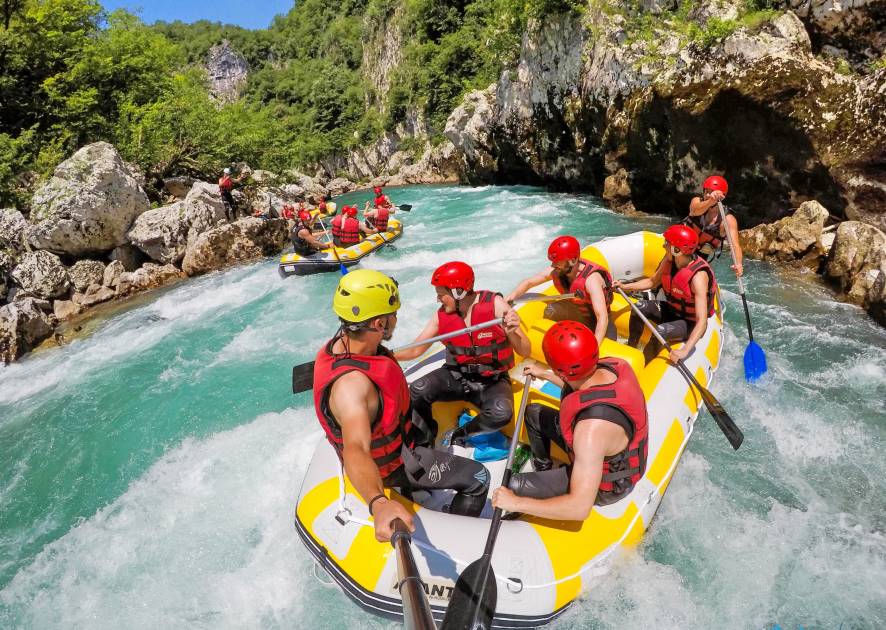
Sarajevo is a city of contrasts. It’s an urban hub surrounded by rolling hills and the stunning Dinaric Alps. It’s a city where Austro-Hungarian architecture mixes with buildings from the Ottoman Empire, and where mosques, Orthodox churches and cathedrals can all be captured in one photograph. It’s a city of narrow streets, colourful market shops and mouthwatering burek, which goes for a pittance and leaves a delicious scent lingering in the air. Of course, it’s also a city which is best remembered for various grim incidents in history.
It was on 28 June 1914 that the Archduke Franz Ferdinand was assassinated near the Latin Bridge, triggering WW1. Then, eight years after the Winter Olympics, the city was at the centre of the brutal Bosnian War, which ran from 1992 to 1995 and left residents of Sarajevo in almost constant danger.
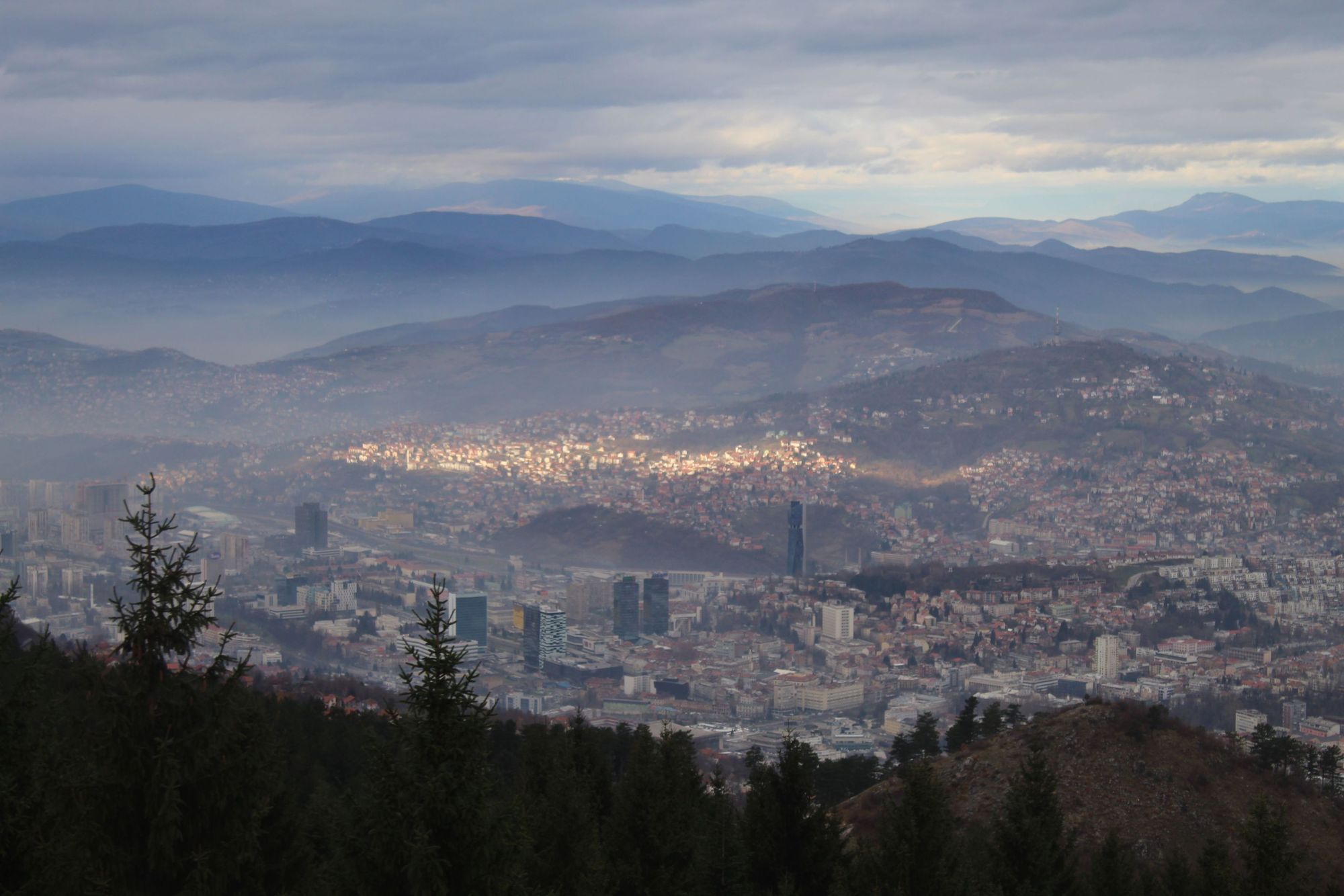
The Siege of Sarajevo was the single longest siege of a capital city in the history of modern warfare, with tens of thousands of people tragically killed, including 5,434 civilians. The city was shelled, on average, 329 times a day during the Bosnian War - the record for a single day being the 3,777 shells that fell on 22 July 1993. A trip to get essentials for family was risking your life.
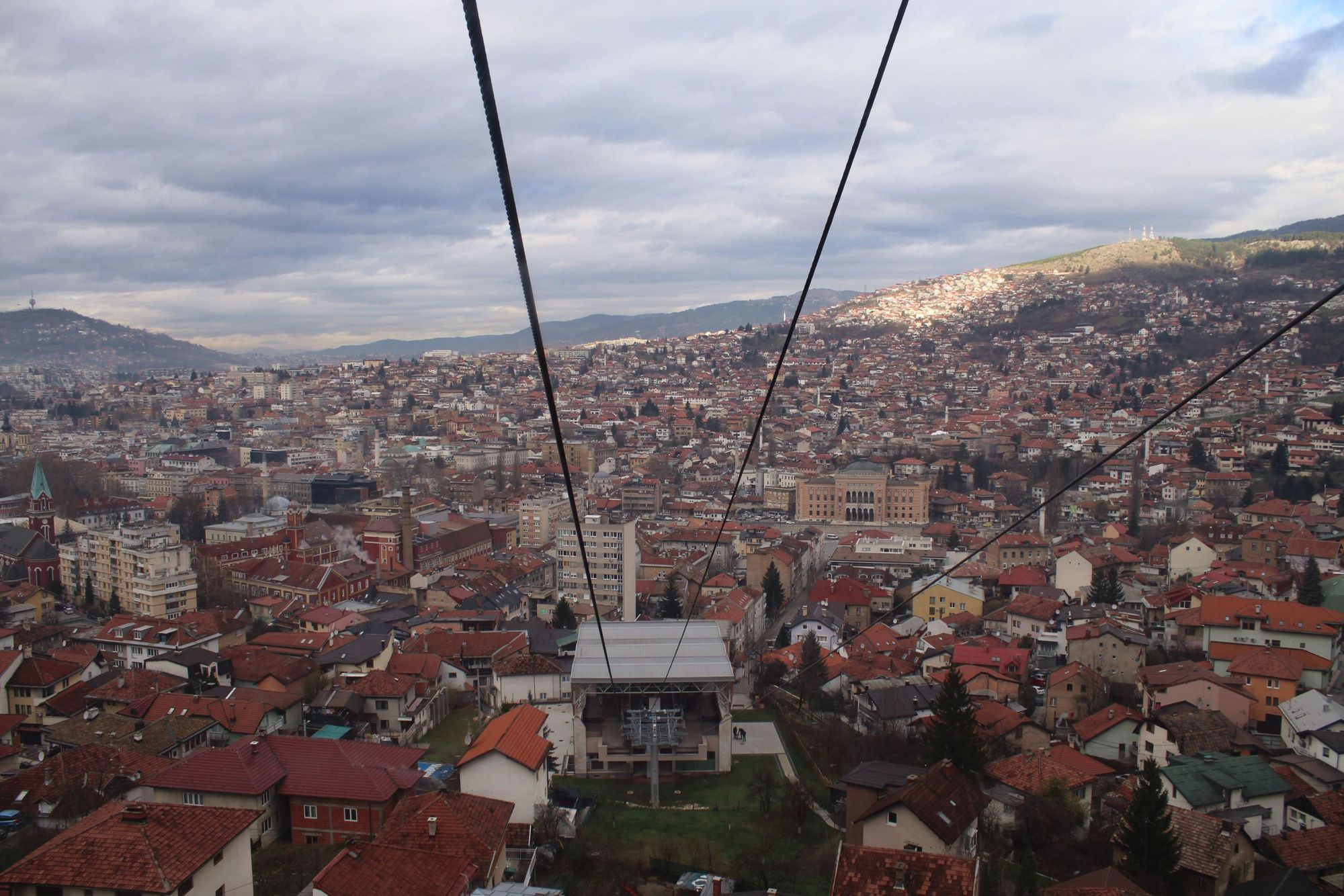

Out of that war would emerge an independent Bosnia and Herzegovina, of course, and Sarajevo now thrives as a city that mixes culture, history and nature. The Olympics of ‘84 remains a year, and an event, that is remembered fondly in Sarajevo. The West had actually boycotted the previous games, in Moscow in 1980, and Russia then boycotted the following 1984 Olympics in Los Angeles - so part of what made it so special was, put simply, that everyone actually came.
The city had also invested in the Games. By installing a new gas pipeline that replaced the coal needed for heating, the smog synonymous with Sarajevo was gone, and clean, mountain air and views replaced it. The snow was plentiful, the spirits high, and the relatively small size of the city meant that athletes all stayed within close proximity to one another, creating a buzz and community feel.

The two-week event is still described by many as the Winter Olympics with the best organisation in the illustrious history of the event. It was a global success, and of course, the views didn't hurt either. The city is simply beautiful - split by the Miljacka River, and with those glorious, layering mountains on every side.

Trebević lies a short walk southeast of the Latin Bridge. Today there is a cable car which takes you up to the summit in 10 minutes and offers tremendous views back down over Sarajevo and beyond. There are signs to the famous bobsleigh track, which began construction in 1981. The first major event held on the track was the European Bobsleigh Championships in 1983, and they were a roaring success. Experts heralded the course as “safe, quick and technically interesting,” requiring “extreme concentration and technical knowledge.”
In 1984, 20,000 luge spectators and 30,000 bobsleigh spectators watched international athletes whizzing down the track at the Olympics. It ran 1,300m for the bobsleigh and 1,210m for the luge. East Germany dominated the medal table on the track, winning three gold, three silver and two bronze medals.
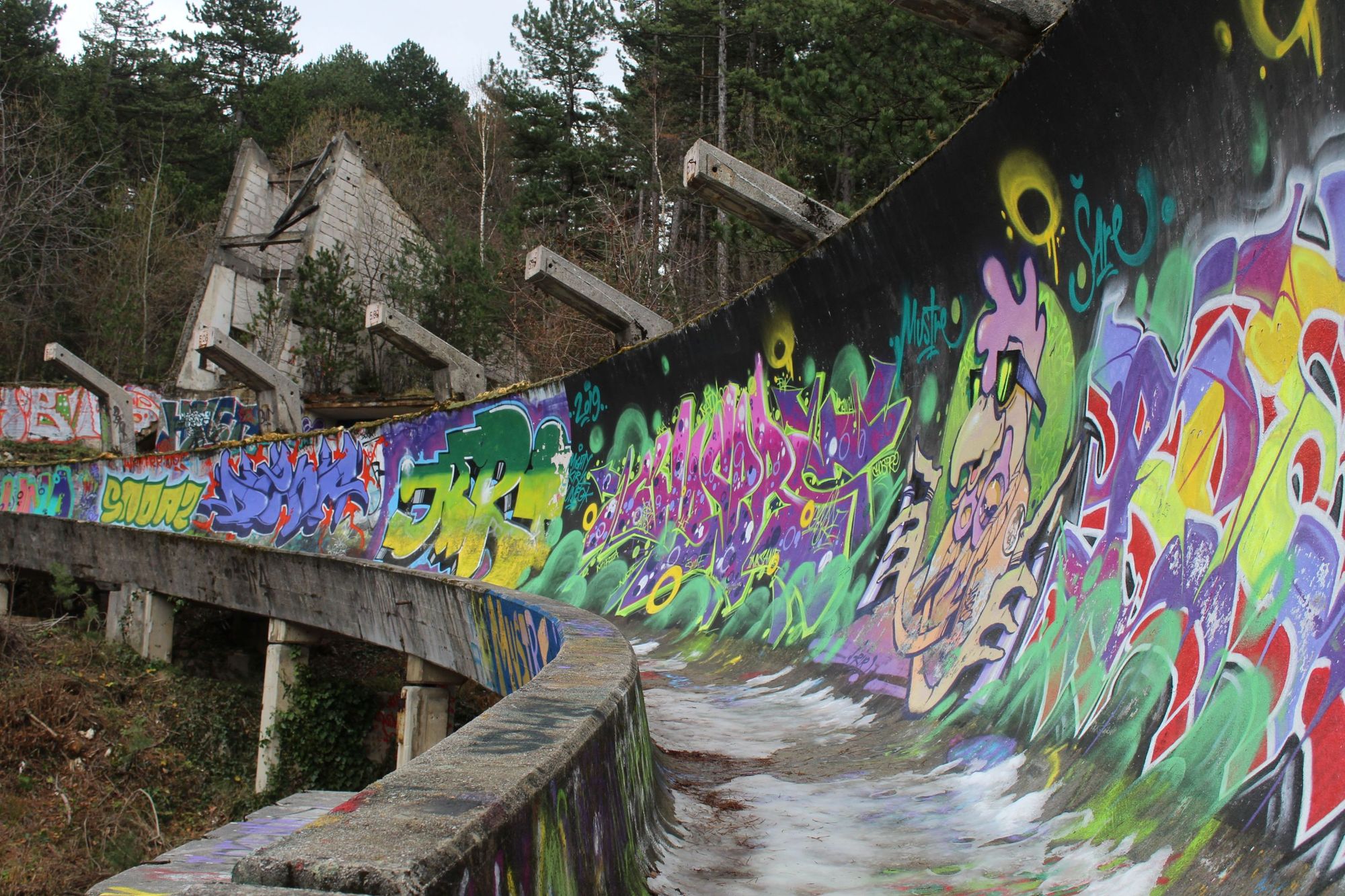
The site continued as a stop on the World Cup circuit until the outbreak of the Yugoslav Wars in 1991 and Bosnian War in 1992. During this time, the position of the track on Trebević, looking down on the city of Sarajevo, made it - and many other Winter Olympic sites - one of tactical importance. The track was used as an artillery site by Bosnian Serb forces, and holes were drilled into certain corners of the track for use in combat.
There's a fantastic ski resort not far beyond Trebević which tells a similar story. The Olympic rings welcome you into the slopes of Jahorina, but on the summit of the mountain - visible from the exit to the chairlift - stands a former Serbian radar station. The station was one of the 338 Bosnian Serb targets bombed in ‘Operation Deliberate Force’ - the 1995 NATO intervention which finally brought the Bosnian War to an end. After a day of skiing, my guide, Skender, tells me: “Skiing is something that brings people together here. The sport is not divided. That’s something that we really need here.”
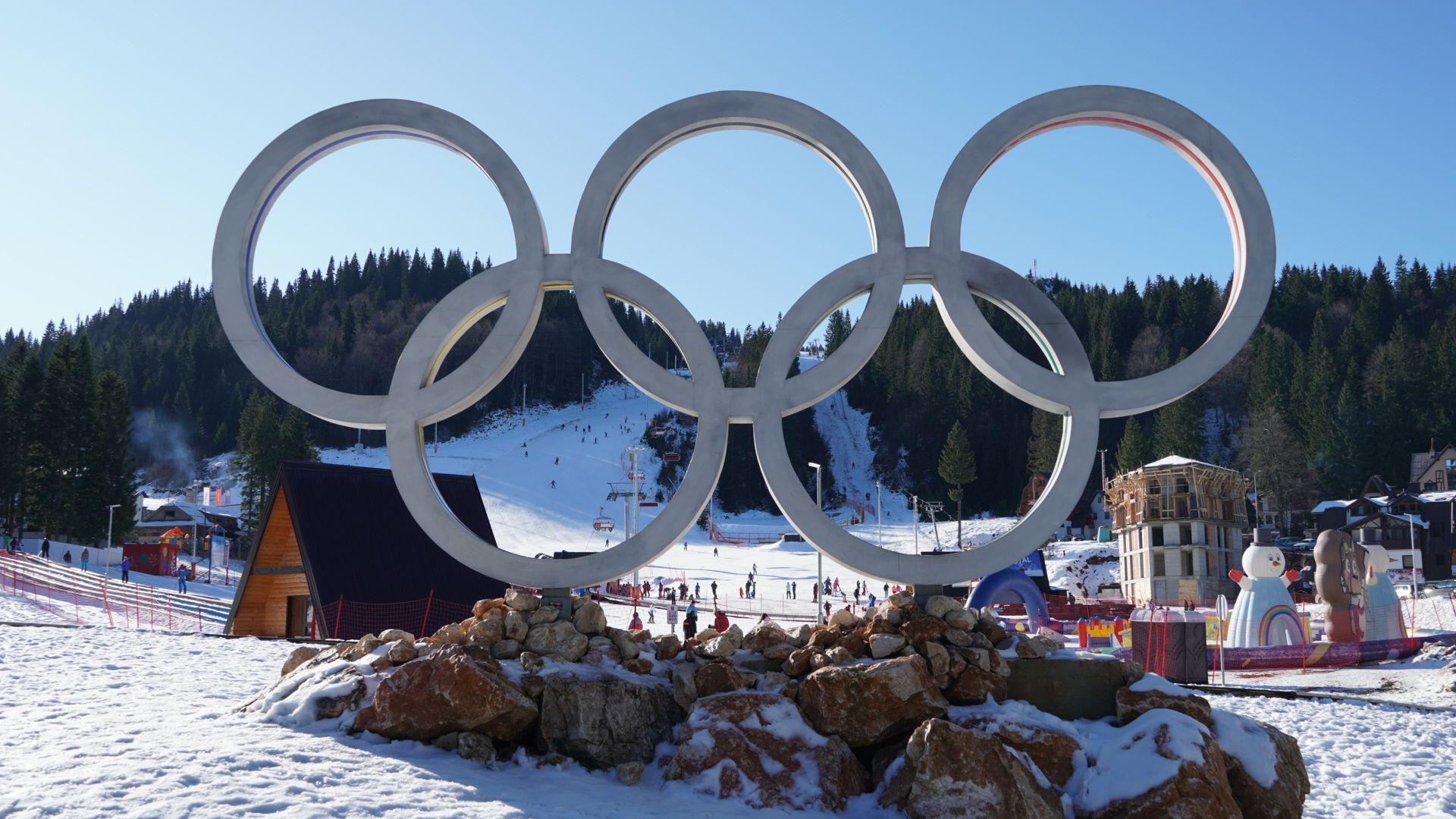
The facilities at Jahorina are now state of the art, and extensive de-mining operations have taken place in Jahorina, as well as around the bobsleigh track on Trebević and in other locations in the mountains. The IOC played its part in rebuilding Sarajevo too - contributing $11.5 million to the city.
Over the years, the bobsleigh track was abandoned and covered in graffiti, but admittedly, it is a little misleading to describe it as ‘abandoned’ today. The track is commonly used as a route down from Trebević, on foot, or thanks to a few viral videos, on a mountain bike. As I walk the route, in amongst the dense forests, I encounter the odd fellow hiker or tourist - though due to the winter conditions, caution does need taken to not slip and fall. Still, I find myself mostly alone.
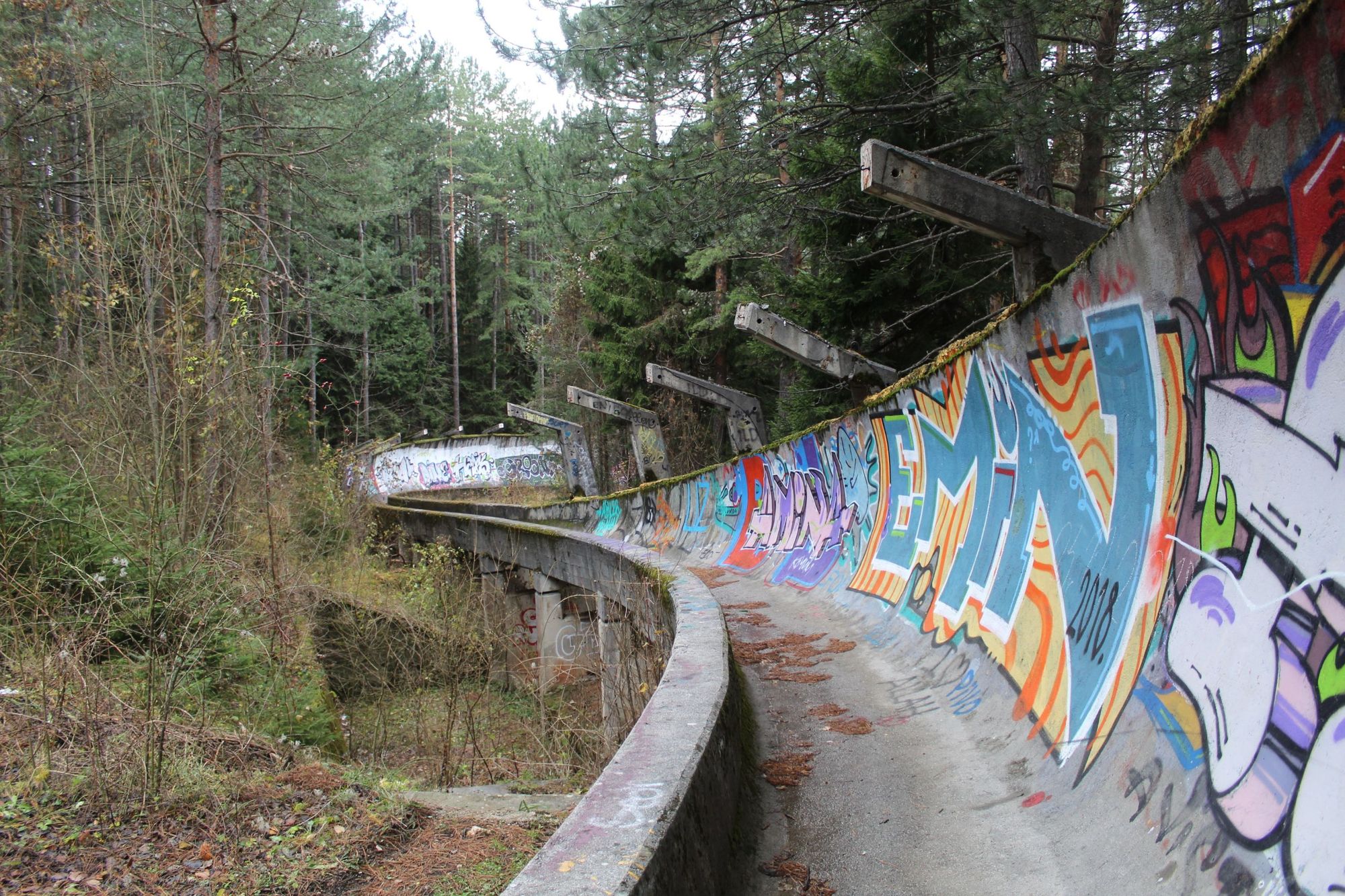
Despite the war, the track has stayed in remarkably good shape - and in June 2014, a restoration project began to remove the overgrowth, with the help of volunteers, the national bobsleigh federation, and with a grant from the International Luge Federation. It is now a functioning run, used for summer luge training by the Slovakian, Polish, Turkish, Slovenian, Croatian and Serbian national teams - with some leftover graffiti providing an extra bit of flair.
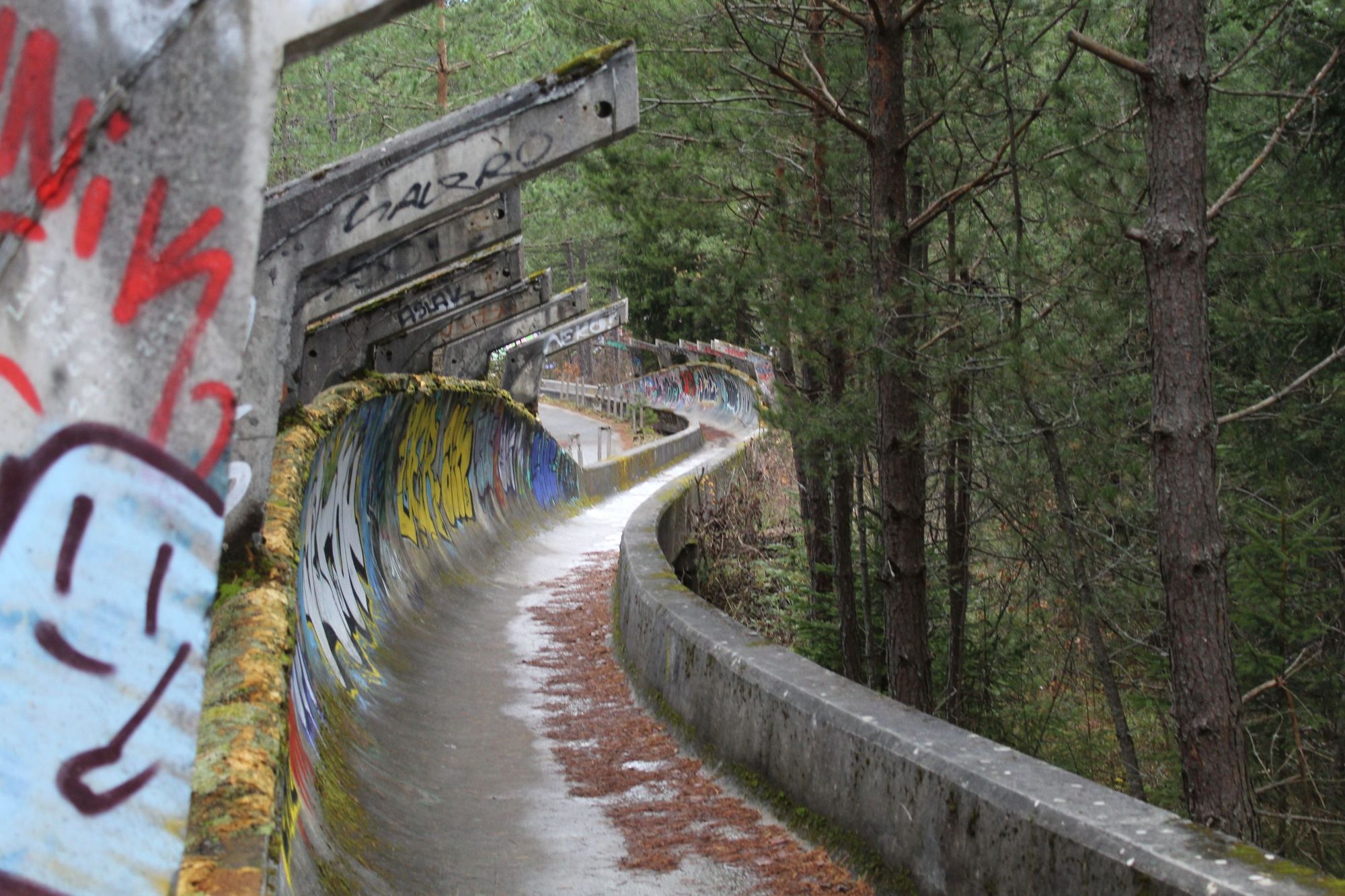
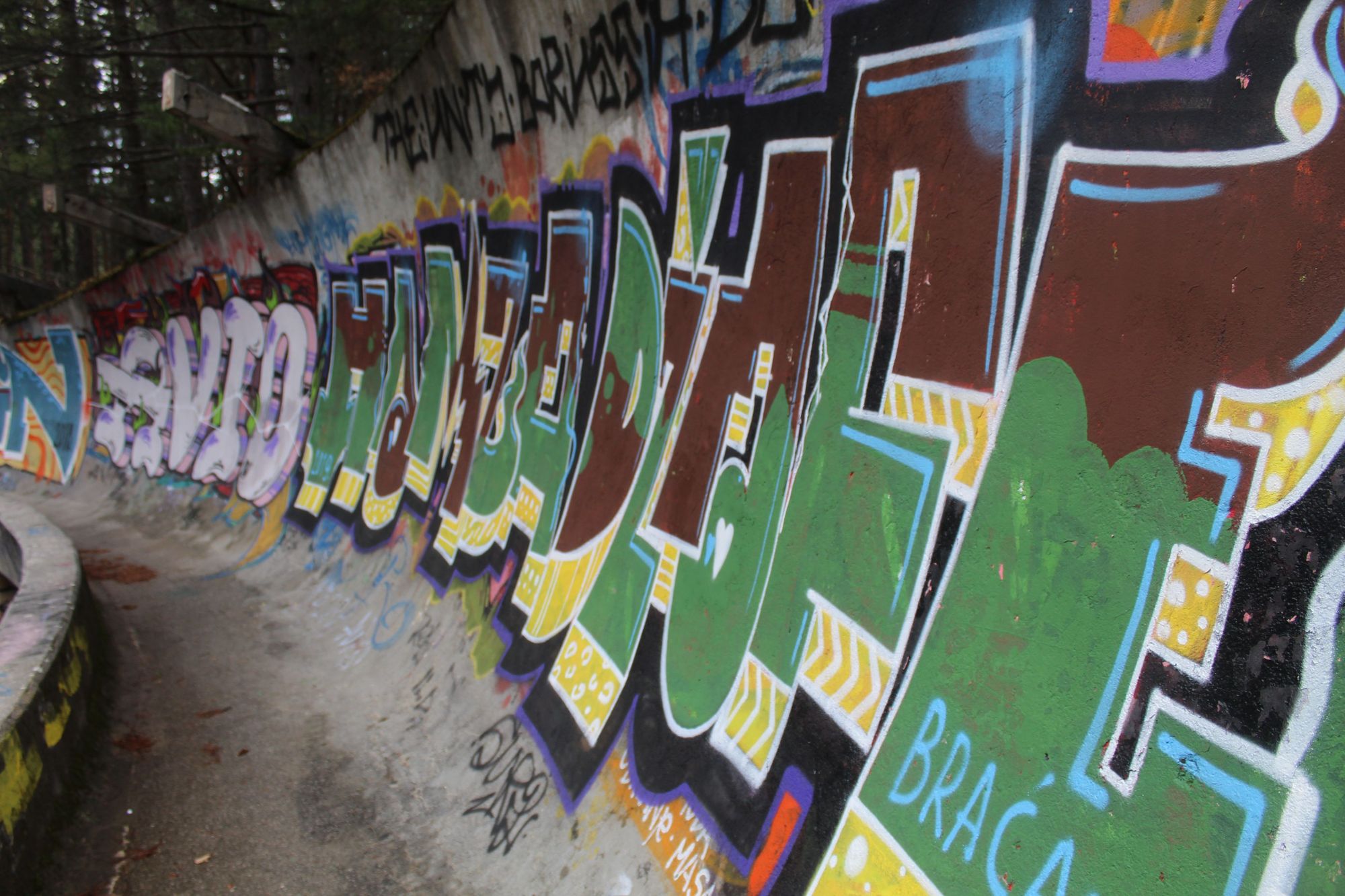
Sarajevo today is a city unlike any other in the world; where secrets, stories and scenery wait around every corner (nevermind the excellent coffee). It’s a European capital where your money goes a long way for food and drink; where history has unfolded, and where the mighty mountains of the Dinaric Alps await.
Inspired? Check out our range of adventure holidays in Bosnia now!

